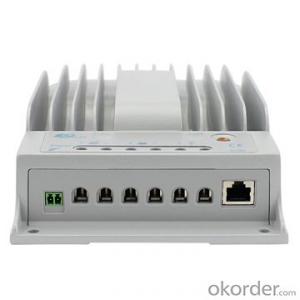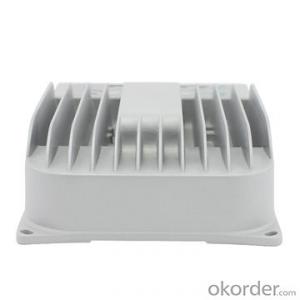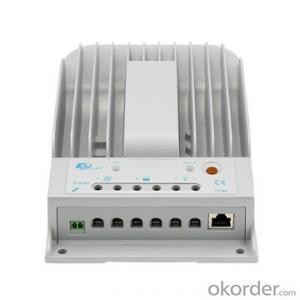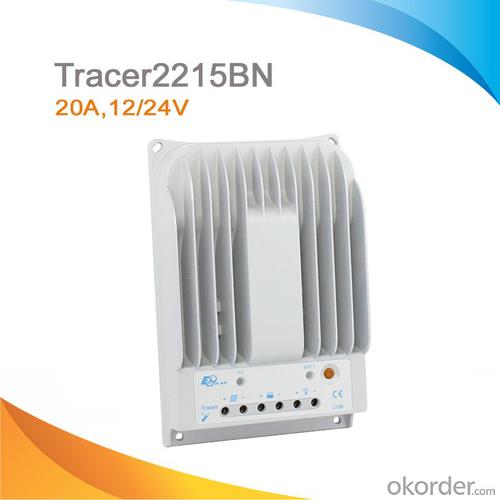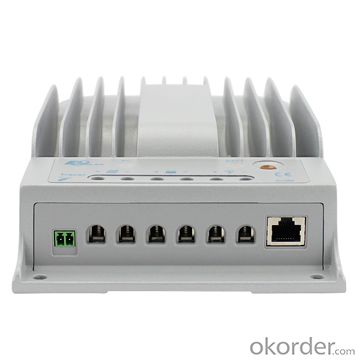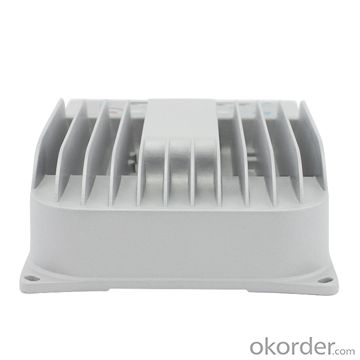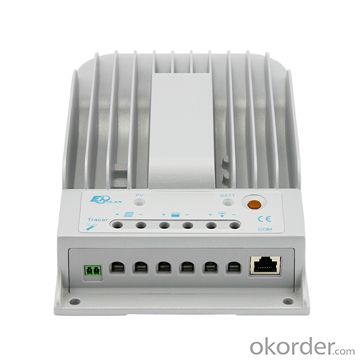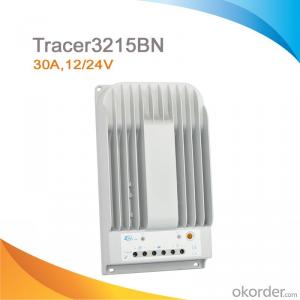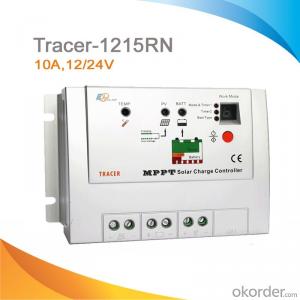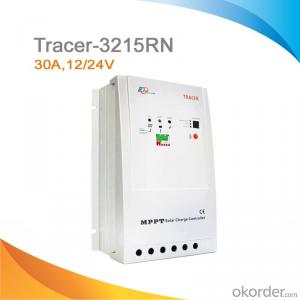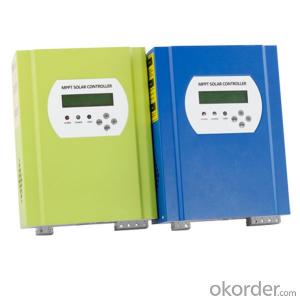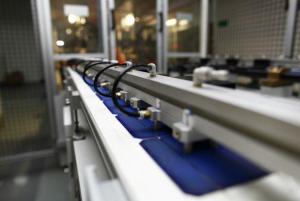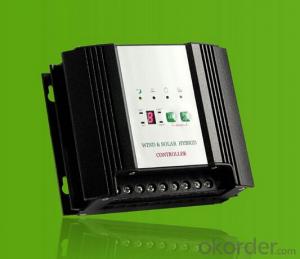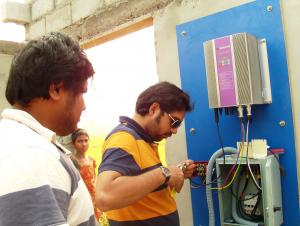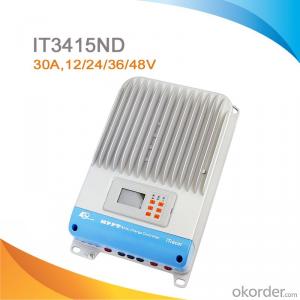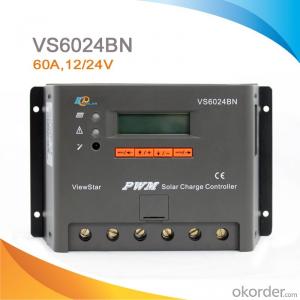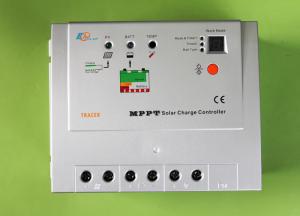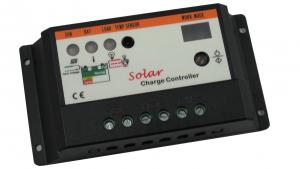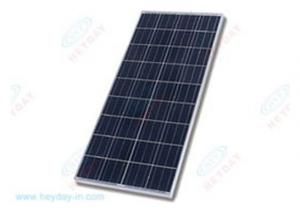20A Solar Controllers MPPT Solar Charge Controller 20A, 12/24V, Tracer2215BN
- Loading Port:
- Tianjin
- Payment Terms:
- TT or LC
- Min Order Qty:
- -
- Supply Capability:
- 10000 pc/month
OKorder Service Pledge
OKorder Financial Service
You Might Also Like
Specifications
10a,20a,30a,40a,12/24v auto work
Die-cast aluminum design
RS485 ports with MODBUS communication
option monitoring software
Features:
·Innovative MPPT technology
·Peak conversion efficiency of 98%
·High tracking efficiency up to 99%
·Several seconds tracking speed
·Die-cast aluminum design and nature cooling
·Temperature compensation
·Diversified load control to meet different requirements
·Four battery type options: Sealed, Gel, Flooded, and USER
·Intelligent lighting and timer control for solar lighting system
·Energy statistics function
·RS485 ports with MODBUS communication protocol
·Optional PC monitoring software and remote meter for real-time monitoring and battery management parameter setting
·Field upgradable firmware
Electronic Protections:
·PV short circuit protection
·PV overvoltage alarm protection
·PV current limiting protection
·PV reverse polarity protection
·Battery overcharge protection
·Battery over discharge protection
·Battery reverse polarity protection
·Load overload protection
·Load short circuit protection
·Overheating protection
Specification:
Model | Tracer1215BN | Tracer2215BN | Tracer3215BN | Tracer4215BN |
Nominal system voltage | 12/24V auto work | |||
Rated battery current | 10A | 20A | 30A | 40A |
Rated load current | 10A | 20A | 20A | 20A |
Max. PV open circuit voltage | 150V | |||
Max. battery voltage | 32V | |||
Max. PV input power | 130W (12V) | 260W (12V) | 390W (12V) | 520W (12V) |
260W (24V) | 520W (24V) | 780W (24V) | 1040W (24V) | |
Equalize charging voltage | Sealed: 14.6V, Flooded: 14.8V, USER: 9~17V | |||
Boost charging voltage | Gel: 14.2V, Sealed: 14.4V, Flooded: 14.6V, USER: 9~17V | |||
Float charging voltage | Gel /Sealed /Flooded: 13.8V, USER: 9~17V | |||
Low voltage reconnect voltage | Gel /Sealed /Flooded: 12.6V, USER: 9~17V | |||
Low voltage disconnect voltage | Gel /Sealed /Flooded: 11.1V, USER: 9~17V | |||
Self-consumption | ≤50mA(12V) ≤27mA(24V) | |||
Grounding | Common negative | |||
Temp. compensation | -3mV/℃/2V | |||
Communication Port | RS485 / RJ45 interface | |||
Working temperature | -35℃~+55℃ | |||
Storage temperature | -35℃~+80℃ | |||
Humidity | ≤95% N.C. | |||
Enclosure | IP30 | |||
Overall dimension | 196x118x36mm | 217x143x56mm | 281x160x60mm | 303x183x64mm |
Terminal | 4mm2 | 10mm2 | 16mm2 | 25mm2 |
Net weight | 0.9kg | 1.5kg | 2.3kg | 2.9kg |
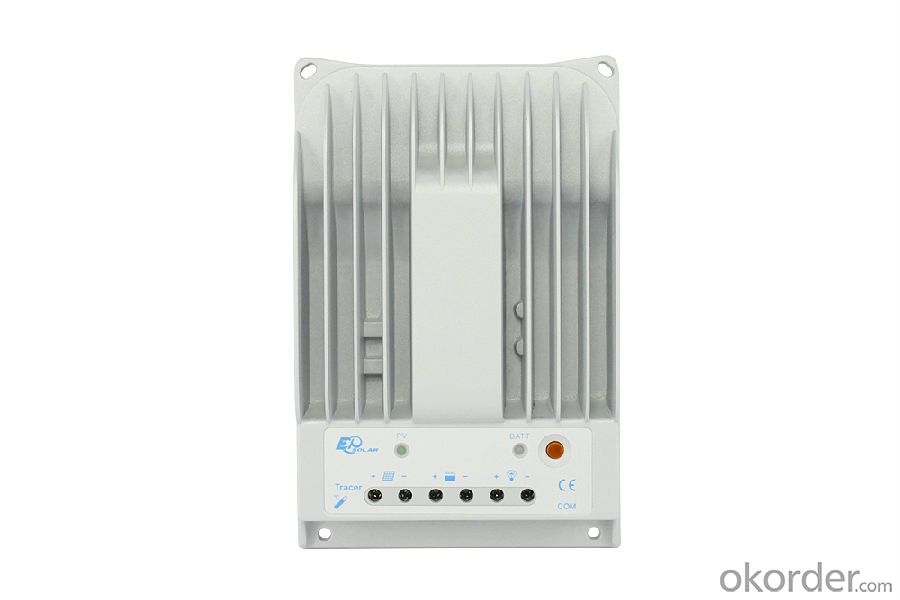

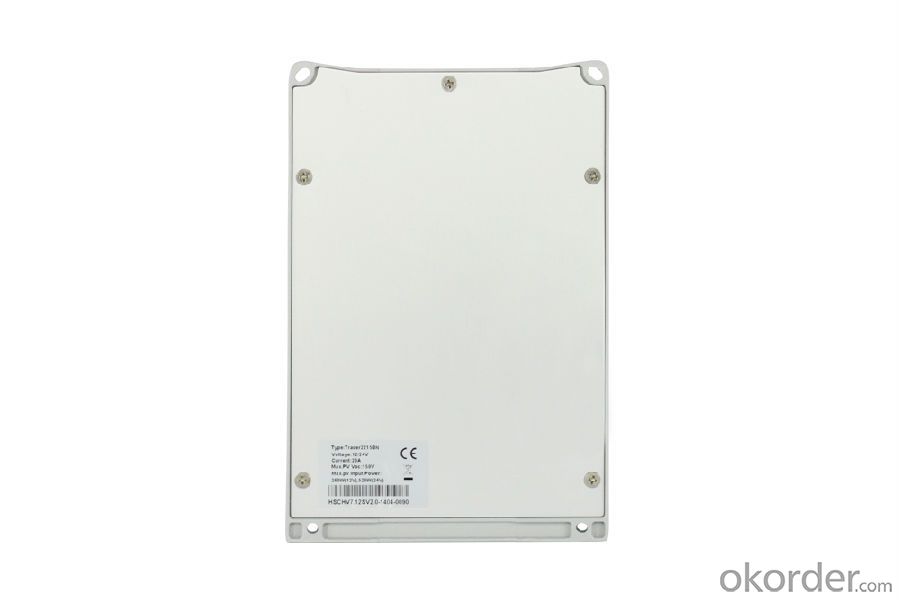
FAQ:
Q1. What is the voltage?
A1. Our 45/60A solar charge controller is 12/24/36/48V auto work.
Q2. What is the difference between MPPT&PWM?
A2. MPPT has higher efficiency, it can track the max power point and won't waste energy.
Q3. What is the efficiency of the MPPT controller?
A3. MPPT>99%, peak conversion efficiency>98%.
Q4. What is the waranty of product?
A4. 12 months.
Q5. What protection does your MPPT controller have?
A5. PV array short circuit, PV reverse polarity, Battery reverse polarity, Over charging, Output short circuit.
- Q: How do I ensure proper ventilation for a solar controller installation?
- To ensure proper ventilation for a solar controller installation, it is important to place the controller in a well-ventilated area. This can be achieved by installing the controller in a location with adequate airflow, away from direct sunlight or heat sources. Additionally, leaving enough space around the controller for air circulation and avoiding any obstructions will help maintain proper ventilation.
- Q: How do I install a solar controller in my solar panel system?
- To install a solar controller in your solar panel system, start by locating the main electrical panel in your home or building. Next, turn off the power supply to ensure safety during the installation process. Mount the solar controller near the solar panels, ensuring it is easily accessible for monitoring and maintenance. Connect the controller's positive and negative terminals to the corresponding terminals on the solar panels. Finally, connect the controller to the battery bank, following the manufacturer's instructions. After completing the installation, you can turn the power supply back on and monitor the controller to ensure it is functioning properly.
- Q: What is the display type of a solar controller?
- The display type of a solar controller typically consists of an LCD (Liquid Crystal Display) screen.
- Q: Can a solar controller be used with lead-acid batteries?
- Yes, a solar controller can be used with lead-acid batteries. In fact, it is a common practice to use a solar controller to regulate the charging and discharging of lead-acid batteries in solar power systems. The solar controller helps to prevent overcharging and over-discharging, ensuring the longevity and optimal performance of the batteries.
- Q: How does a PWM solar controller regulate the charging process?
- A PWM solar controller regulates the charging process by using pulse width modulation (PWM) technique. It constantly monitors the battery voltage and adjusts the width of the charging pulses to maintain a consistent charging voltage. When the battery is low, the controller outputs a high duty cycle, delivering maximum charging current. As the battery voltage approaches the desired level, the duty cycle decreases, reducing the charging current. This allows the controller to regulate the charging process and prevent overcharging, ensuring optimal battery performance and longevity.
- Q: How does a solar controller handle battery short circuit protection?
- A solar controller typically handles battery short circuit protection by incorporating a built-in feature that automatically detects and prevents any short circuit conditions within the battery. It achieves this by monitoring the current flow and voltage levels within the battery. If a short circuit occurs, the controller immediately disconnects the battery from the solar panel to prevent damage and potential hazards.
- Q: How does a solar controller handle low battery voltage disconnect?
- A solar controller handles low battery voltage disconnect by monitoring the voltage level of the battery. When the voltage drops below a certain threshold, typically around 11.5 to 11.8 volts, the controller automatically disconnects the solar panels from the battery to prevent further discharge. This helps protect the battery from deep discharge, which can damage its capacity and lifespan.
- Q: Does a solar controller have a built-in display for monitoring?
- Yes, a solar controller typically has a built-in display for monitoring.
- Q: Can a solar controller be used in a solar-powered refrigeration system?
- Yes, a solar controller can be used in a solar-powered refrigeration system. A solar controller is a device that regulates the flow of electricity from solar panels to the batteries or electrical loads. In a solar-powered refrigeration system, the solar controller helps manage and optimize the power generated by the solar panels, ensuring that the refrigeration system operates efficiently and effectively. It helps protect the batteries from overcharging, ensures proper voltage levels, and helps maximize the use of solar energy in the system.
- Q: Can a solar controller be used in a solar-powered electric fence system?
- Yes, a solar controller can be used in a solar-powered electric fence system. A solar controller helps regulate the charging and discharging of the batteries in the system, ensuring efficient and effective operation of the electric fence.
Send your message to us
20A Solar Controllers MPPT Solar Charge Controller 20A, 12/24V, Tracer2215BN
- Loading Port:
- Tianjin
- Payment Terms:
- TT or LC
- Min Order Qty:
- -
- Supply Capability:
- 10000 pc/month
OKorder Service Pledge
OKorder Financial Service
Similar products
Hot products
Hot Searches
Related keywords

